Yates Account
Join now
Create a Yates account today!
Sign up to join the Yates Garden Club for monthly e-mails packed with seasonal inspiration, tips for success & exclusive promotions.
Plus if you’re a Garden Club member you can take part in the Yates Growing Community - a blog to share successes, get advice & win prizes in fun challenges along the way!

Forgot password
Enter the email address associated with your account, and we'll email you a new password.

What to do, this Month
- With the shortest day behind us, the days will become noticeably longer as we pass though the rest of the season. Even in winter there’s plenty to be done in the garden to get ready for the new season.
- If you have a greenhouse, it’s time to clean it and make any repairs, wash pots, gather supplies and get everything ready for the new season that’s about to start.
- Winter can have surprisingly dry spells, so keep an eye on soil moisture and in particular, plants in pots. You may find you have to bring out the hose and water deeply.
- Keep moss, algae, and slime off paths to keep them safe and reduce slipping hazards.
- On rainy days, take some time to find out more about the plants you want to grow, to decide if they’ll suit your garden along with how to take care of them. The healthiest plants are the ones that are planted in the right place! If conditions really suit them, they’re sure to thrive.
- If you’ve had Passionvine Hoppers infesting your garden since summer, look for their distinctive eggs among the dead sticks and twigs. Clearing them out from the garden will reduce next year’s problem. Destroy them by burning or send them off the property with the rubbish.
Trees and Shrubs
- July is the perfect time for working with deciduous trees. While they’re dormant they can be planted, pruned, reduced in size, or moved with minimal disruption.
- Winter can be a stormy, tumultuous season, so check trees regularly for wind damage. Make any repairs and strengthen up stakes if necessary.
- Don’t try to fix frost-damaged perennials. It’s ‘curtains’ for annuals after the first good frost, but frost damage on your long-term plants can actually protect and insulate them from further harm.
- Attractive native birds to the garden by adding the native plants they love to eat. For a supply of berries and nectar, consider planting kōwhai, flax, kaka beak, wineberry, karamu, and corokia.

Vegie Tasks
- You still have time to plant garlic, onions and shallots.
- For a sweet treat in early summer, strawberries can be planted from July through to mid spring. Give them a rich free draining soil to keep them happy.
- Early potatoes can be started in frost free areas, or grow them in a container in a sheltered spot or greenhouse.
- Get ready for kūmara season by sprouting one. This can be done by taking a kūmara and sitting half in a jar of water, or nestling it in damp sand. Once the sprouts are 20 – 30cm long, gently remove them from the kūmara and put them in a jar of water for roots to form.
- Asparagus crowns will begin appearing in garden centres now. You’ll need to be patient for the first harvest, but asparagus will continue to grow for 20 years or more and are well worth the wait.
- For delicious tender salad leaves and young leafy greens, add a cloche or row to provide a little extra warmth to young seedlings.
Fruit Tree Care
- Continue pruning fruit trees while they’re dormant, to have them spring-ready before the new growth begins to stir.
- For a healthy and productive fruiting season, keep up to date with your winter spray programme to tackle overwintering pests and diseases.
- Plant fruit trees in July to create an abundant home orchard for seasons to come. If space is short, consider dwarf or columnar trees, or train them against a fence with an espalier technique. There are also many varieties suited to container growing. Remember you may need to pair a tree up with a second tree nearby, to help with pollination and fruit set. If you don’t have the space for two, look for self-fertile or double grafted varieties.
- Citrus trees are hungry plants, especially when laden with fruit. Feed regularly with a citrus fertiliser specifically designed to provide balanced nutrients for healthy growth and fruit production.

Flowers Everywhere
- Give your roses some love. Kick off with a copper and oil spray program to treat black spot, rust and overwintering pest insects. When roses have gone completely dormant, prune them for health, shape, improved airflow and vitality. It’s also a great time to plant new roses in your garden.
- In cool climates, now’s a great time to plant peonies in a well-drained spot. You’ll have flamboyant blooms for years to come.
- For instant colour and sweet fragrances to lift the winter gloom, visit the garden centre and browse for hellebores, polyanthus, primula, pansies, and flowering shrubs such daphne, manuka, camellias, Rhododendrons, magnolia and wintersweet.
- For a delightful display of flowers in spring, sow seeds for calendula, sweet peas, lupins, California poppies, or sprinkle Yates Cottage Garden Mix seed across a bare spot. It will reward you with a changing array of beautiful flowers over the growing season.
- Hydrangeas can be pruned now. Double-check how your specific hydrangea variety likes to be pruned, to ensure you don’t accidentally remove the new season blooms. Offcuts can be used as hardwood cuttings, to create new plants for free.
Love Your Lawn
- Give your lawnmower a deep clean, service and sharpen the blade so it’ll give a better-quality cut (and last longer).
- Adding an edge or mowing strip between the garden and the lawn can make the garden easier to manage during the warmer months.
- A monthly application of Yates Thrive Natural Seaweed Tonic boosts resistance to fungal problems and reduces the impact of stress from cold conditions.
- Remove weeds that are actively growing in the lawn throughout the winter.
- During extended periods of rain, fungal diseases are more prevalent in lawns with longer grass. In this situation, once the grass is dry, set the mower just a little lower to shorten the grass and reduce the risk.
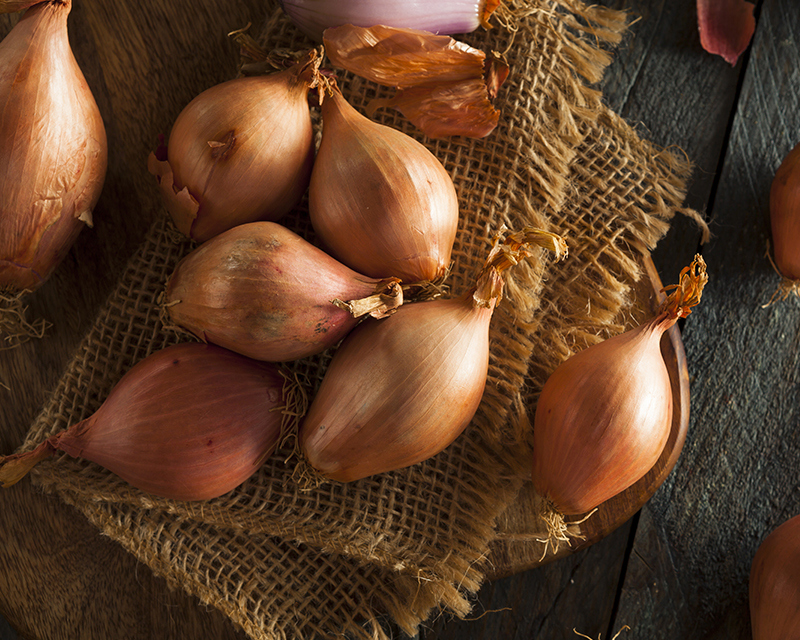
Get your onions underway
Ask any chef how indispensable onions are! Onions usually aren’t the star ingredient on the plate, but nothing tastes quite as good without them. It’s hard to think of a more versatile vegetable.
Our reliance on onions has been a long time in the making; they’ve been cultivated for more than 7,000 years and were propagated throughout the world by travelling gardeners.
Onions are delicious eaten raw, roasted, fried, sautéed or pickled. They’re an essential ingredient in a soffritto, making them a basic building block for an enormous range of Mediterranean dishes.
Onions take time to mature (5-6 months, so they do need a bit of patience). They can be sown until the end of winter but shouldn’t be left too late; so that you can harvest before the hottest January and February weather arrives and brings downy mildew with it.
It’s standard practise for onions to be sown direct where they are to grow, but stay on top of the weeds for best results.
- Choose a spot that receives plenty of sun, with well-drained soil. Prior to planting, improve your soil by digging in Yates Thrive Natural Blood & Bone with Seaweed.
- Dig a narrow furrow or ‘drill’, sow the seeds into it and cover lightly with Yates Black Magic Seed Raising Mix. Onion seeds only need to be sown 6mm deep, so don’t be tempted to plant them too deeply; they tend to form thickened necks at the top of the bulb which means they won’t keep very well. Firm down and keep them moist.
- Once the seedlings are 10-12cm tall, thin them out to 10cm spacings to give them plenty of room to grow. Don’t waste the onions you thin out – they’re tasty and can be used like spring onions!
- Feed every couple of weeks with Yates Thrive Natural Fish Seaweed+ Plant Food to encourage healthy growth.
- Harvest when the leaves wilt and fall over. Gently pull the onion out of the ground, cut the leaves off a few centimetres above the bulb and then leave them in a warm sunny spot to dry out. Once the skins and roots are dry, they can be stored in wire baskets or mesh bags in a cool, dry spot.
Growing Tip
You don’t have to wait for all the onion bulbs to be full sized before you harvest them. You can pick and use smaller bulbs and leave the rest to grow bigger.

It's the perfect time to plant strawberries
Strawberries can be grown from packaged crowns, small plants or seed. Packaged crowns are available in winter; because they usually possess a substantial root system, they’ll give the plants a head start. Small strawberry plants in mini pots are easier to find in the warmer months.
- Choose a sunny spot with well drained soil.
- Enrich the soil with Yates Dynamic Lifter Organic Plant Food .
- Plant crowns, small plants or sow seeds into well drained soil.
- Water in well. Keep the soil moist until seeds germinate and/or plants are established.
- Mulch around the base of crowns and small plants with organic mulch like woodchip or pea straw, keeping it away from the base of the plant. For seeds, mulch after plants have become more established.
- During the growing and flowering/fruiting season feed with Yates Thrive Citrus & Fruit Granular Plant Food. TIP: for an added boost apply Yates Thrive Strawberry & Berry Fruit Liquid Plant Food weekly.
- If transplanting, do so when plants are big enough to handle.
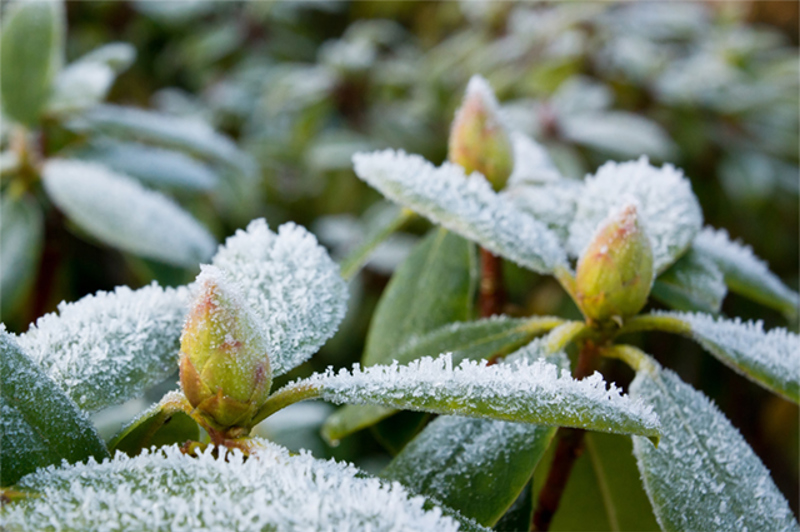
Frost protection
Winter frosts can damage tender plant foliage and shoots, especially if unseasonable weather has encouraged out-of-season or unusual growth.
There are a few strategies to help protect vulnerable growth from frost.
-
Move potted plants to a more protected area such as on a veranda or patio or close to a wall.
-
Cover sensitive plants with frost or shade cloth. You may need to construct a supporting frame out of wooden stakes or wire to hang the cloth over. Ensure that the cloth reaches right down to the ground. Bricks or pavers are a handy way to weigh down the cloth edges.
-
Protect small seedlings on frosty nights by creating cloches out of plastic soft drink bottles, which have been cut in half.
-
Keep the soil moist, as moist soil is better able to absorb and store heat during the day. Dry soil can worsen frost damage.
-
Don’t prune off any damaged foliage until the risk of frost has passed, as damaged foliage can help protect the growth underneath.
-
Indoor plants should also be protected from the cold. Move indoor plants away from bare windows and chilly draughts coming under doorways or through gaps in windows. Many plants that we grow indoors have originated from tropical climates and won’t appreciate being exposed to low temperatures.
-
Applying Yates Thrive Natural Seaweed Tonic can also aid plant recovery from stress conditions, like frost.
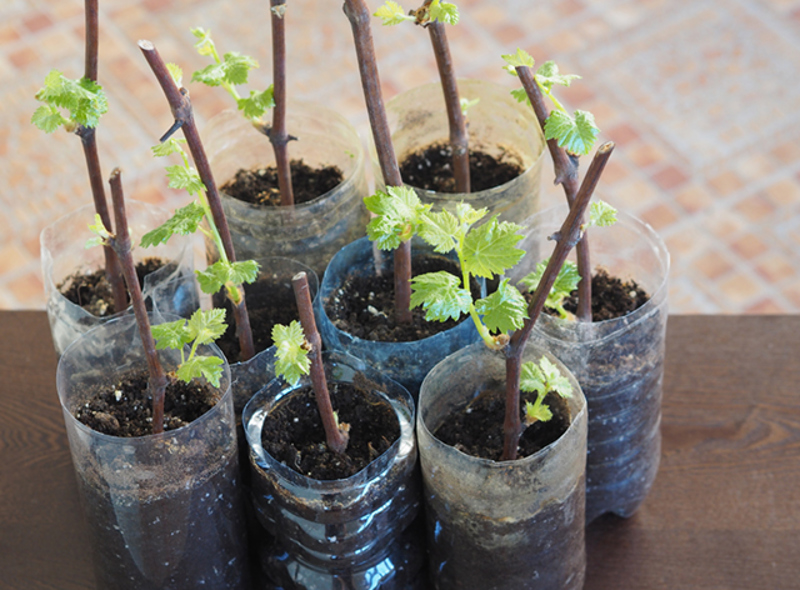
Clever Cloning
Do you have a favourite deciduous shrub or vine growing in your garden that you would like to duplicate? It’s easier than you think! Cloning is the technical sounding term for taking pieces of stems from plants like hydrangeas, wisteria and grapevines during winter and encouraging them to grow their own roots.
You can give it a go this winter, July is the ideal time to take cuttings. Why not start by trying your hand at some ‘hardwood’ cuttings?
Here’s a step by step guide to growing new plants from hardwood cuttings:
-
Choose leafless stems around 0.75 – 1 cm thick and cut off 15 – 18 cm long pieces.
-
The top cut should be just above a node (the bud where the new leaves develop) and the bottom cut just below a node. Make a slanted cut at the top so you can remember which way is up.
-
Dip the bottom ends of the cuttings into Yates Clonex Root Gel - Hard Wood Red. Clonex Red contains a concentrated plant hormone which helps promote root development as well as sealing and protecting the cutting.
-
Poke about ½ dozen holes with a pencil into pots filled with moist Yates Black Magic Seed Raising Mix. Insert the gel-dipped ends of the cuttings into the holes and gently pinch the potting mix together to firm them, taking care not to wipe the gel off the bottom of the cutting.
-
Keep the pot in a cool, sheltered, well-lit position. Maintain a moist atmosphere around the cuttings by covering the top with a plastic bag, or the clear bottom of a soft drink bottle. After a couple of months check for new roots. Once roots are well established, individual cuttings can be transplanted into small pots to grow until they are big enough to be planted out into the garden.
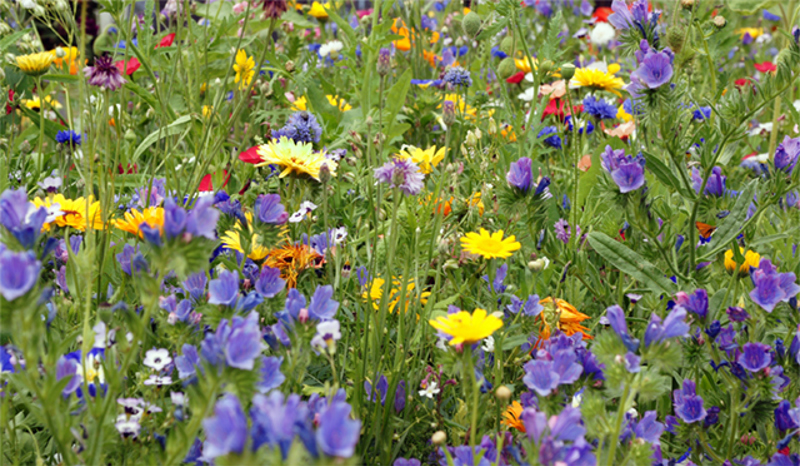
Sow a sprinkle of colour
All around New Zealand during July you can sow wildflower blends. Altenatively, we have a fabulous blend of vibrant cottage garden flowers, for a spring a festival of colour.
Yates Cottage Garden Mix is a blend of easy-to-grow, brightly coloured free-flowering annuals that will create a charming cottage garden.
The mix contains flowers like coreopsis, dianthus, pansy, antirrhinum (snapdragon), aquilegia (columbine), schizanthus, wallflower, zinnia, salvia, calendula and nemesia. What will pop up depends on the climate at the time, so it’s a floral surprise packet!
Growing Tips:
-
Simply scatter the seed thinly over bare soil in a sunny garden bed, rake lightly into the soil surface, firm down and water gently.
-
Keep the area moist through the germination period and seedlings will start emerging 7 – 21 days after sowing.
-
Once the seedlings are around 5 cm tall, start feeding each week with potassium fortified Yates Thrive Flower Fruit Soluble Fertiliser, which contains a balanced blend of nutrients to promote healthy leaf growth as well as lots of colourful flowers. Alternatively, apply a top dressing of Yates Dynamic Lifter Organic Plant Food every 6 weeks.
-
The range of plants will grow from 30 – 80 cm tall and will start flowering around 12 weeks after sowing.
-
Many of the flowers are suitable for cutting for a vase and will also attract bees and other beneficial insects.
-
Flower seedlings can be vulnerable to attack by snails and slugs. A light sprinkling of Yates Blitzem Snail Slug Pellets can help protect young plants from these slimy pests.
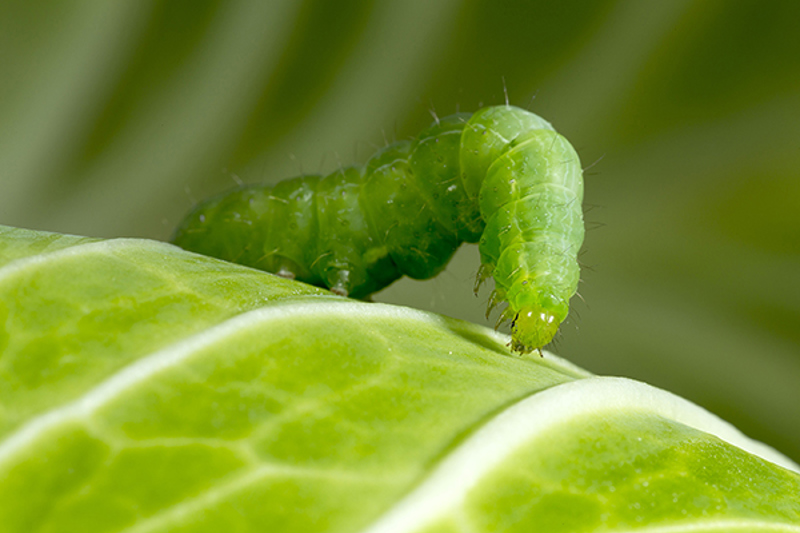
Winter Problems
Caterpillars may still be hanging on. If they’re causing unsightly damage, use Yates Success Ultra Insect Control Concentrate to clean them up. Squirt some Yates Conqueror Spraying Oil onto citrus trees. This will smother scale insects and other sap-sucking insects.
Oxalis is a winter-growing weed that will be taking full advantage of the cold. It may look pretty, but it's very persistent. Spray with Yates Zero Rapid 1-Hour Action Weedkiller Ready to Use. Oxalis does have an annoying habit of growing small bulbs at the roots; if the parent plant is killed the bulbs will emerge afterwards, so a follow-up treatment is usually necessary.
If the soil has any drainage problems, winter is the season when they’ll expose themselves. Use a garden fork to push vertical holes into heavy soils. Create surface drains to carry away excess water. Dig gypsum where possible into clay. Gypsum has a miraculous effect on most clay soils. It binds particles together, allowing air to get into the spaces between the particles and helping excess water to drain away. Deep layers of mulch on wet soil can ensure that it remains cold and damp for three months or more. Hence, it can be a good idea to remove some of the thickness of mulch so that the sun can penetrate to warm up the soil.
Mowing Lawns in Winter
With the temperature low, you don't need to mow regularly like you do in summer. Setting the mower higher in winter will really help – the longer the leaf, the more photosynthesis occurs and the healthier the lawn will stay.
With reduced mowing, now's a great time to get the mower serviced. A lot of people don't get around to sharpening the blades on the mower. Dull blades tear and rip the grass – if you look at the ends of mown grass leaves, you’ll notice little strings of fibre on the cut end where it's frayed and damaged. That’s a signal you’re overdue for sharpening your blades! Sharp mower blades make a cleaner cut and cause less stress to the grass; helping it recover faster. Also, don't mow a wet lawn, it tears and damages the grass pretty much like a dull mower blade.
















Share
Share this article on social media